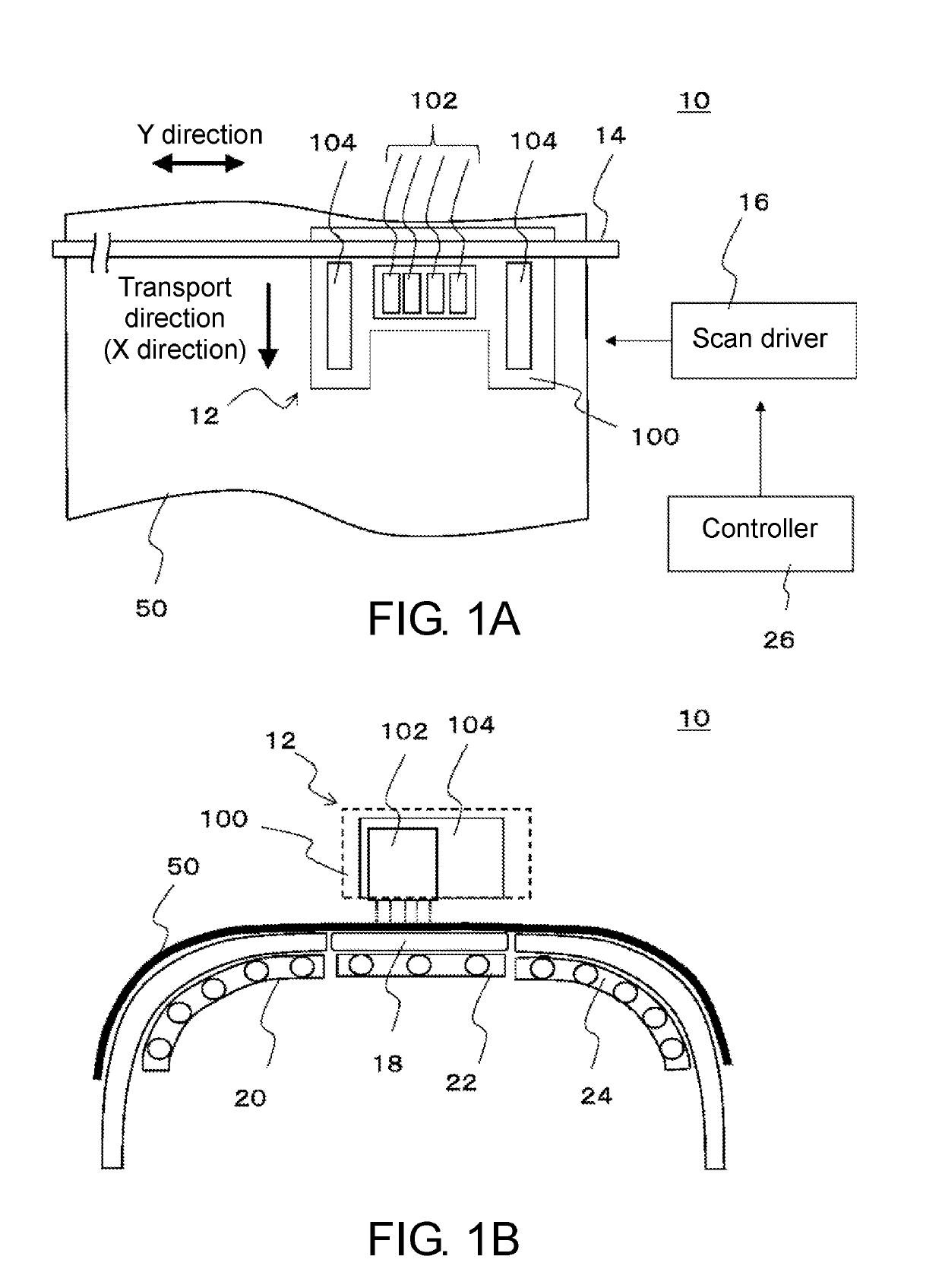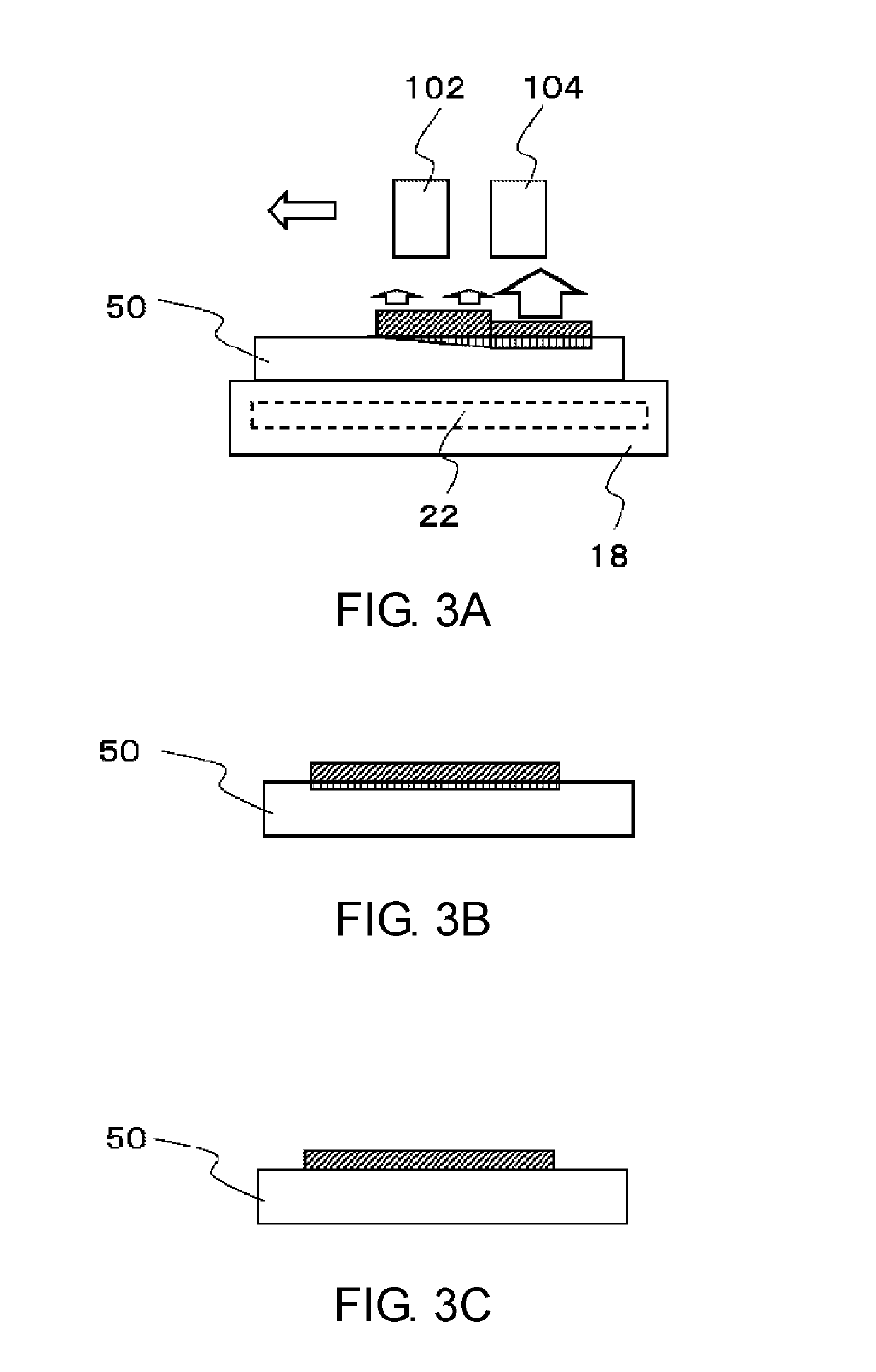Printing apparatus and printing method
- Summary
- Abstract
- Description
- Claims
- Application Information
AI Technical Summary
Benefits of technology
Problems solved by technology
Method used
Image
Examples
working examples
Example 1
[0229]Tables 1 and 2 show compositions of ultraviolet absorbent-containing inks. The materials shown in these tables were mixed and stirred with a stirrer for approximately three hours to prepare a cyan ink and a magenta ink.
TABLE 1IngredientsWt. %Composition ofPigment-dispersed liquid, cyan12cyan inkResin20Diethylene glycol monobutyl ether201,2-butanediol30Surfactant0.5Ultraviolet absorbent1WaterRemainder
TABLE 2IngredientsWt. %Composition ofPigment-dispersed liquid, magenta18magenta inkResin20Diethylene glycol monobutyl ether201,2-butanediol30Surfactant0.5Ultraviolet absorbent1WaterRemainder
The pigment dispersing liquids for the cyan ink and the magenta ink shown in Tables 1 and 2 were respectively FUJI SP BLUE 6559 (Fuji Pigment Co., Ltd.) and FUJI SP MAGENTA 9430 (Fuji Pigment Co., Ltd.). The resin used for both of the inks was SUPERFLEX 126 (DKS Co., Ltd.). The surfactant used for both of the inks was BYK-349, silicon-based surfactant (BYK Japan KK). The ultraviolet abs...
example 2 verification
of Heat Generation by Ultraviolet Irradiation (Test 1)
[0231]The cyan ink prepared in the example 1 was collected in the amount of 10 g and put on a laboratory dish, and then irradiated for one minute with ultraviolet light radiated from an ultraviolet LED lamp. The ultraviolet light had the luminous intensity of 1150 mW / cm2 and the wavelength of 385 nm. A thermograph was used to measure temperatures on the ink surface, and a highest temperature reachable on the ink surface was recorded.
[0232]The cyan ink prepared in the comparative example 1 was tested in the same manner. Table 3 shows the obtained result.
example 3
Measurement of Surface Properties and Ink Bleeding Width of Printed Matter (Test 2)
[0233]By using a printer (CJV-150, MIMAKI ENGINEERING CO., LTD.) filled with the cyan ink and the magenta ink prepared in the example 1, inkjet printing was performed, in which the inks were ejected so as to land next to each other on a medium made of polyvinyl chloride (PWS-G, MIMAKI ENGINEERING CO., LTD.) at the concentration of 100%. The inks were then irradiated with ultraviolet light and dried with a pre-heater, a printing heater, and an after-heater set to a platen temperature 55° C. Ultraviolet LED lamps were attached to both sides of the inkjet heads of the printer and set to start to radiate ultraviolet light having the luminous intensity of 1150 mW / cm2 and the wavelength of 385 nm in approximately 0.7 seconds after the inks were ejected to the polyvinyl chloride medium from the inkjet heads and cease to radiate ultraviolet light approximately 0.1 seconds later. The surface properties of the ...
PUM
| Property | Measurement | Unit |
|---|---|---|
| Temperature | aaaaa | aaaaa |
| Fraction | aaaaa | aaaaa |
| Fraction | aaaaa | aaaaa |
Abstract
Description
Claims
Application Information
 Login to View More
Login to View More - R&D
- Intellectual Property
- Life Sciences
- Materials
- Tech Scout
- Unparalleled Data Quality
- Higher Quality Content
- 60% Fewer Hallucinations
Browse by: Latest US Patents, China's latest patents, Technical Efficacy Thesaurus, Application Domain, Technology Topic, Popular Technical Reports.
© 2025 PatSnap. All rights reserved.Legal|Privacy policy|Modern Slavery Act Transparency Statement|Sitemap|About US| Contact US: help@patsnap.com



